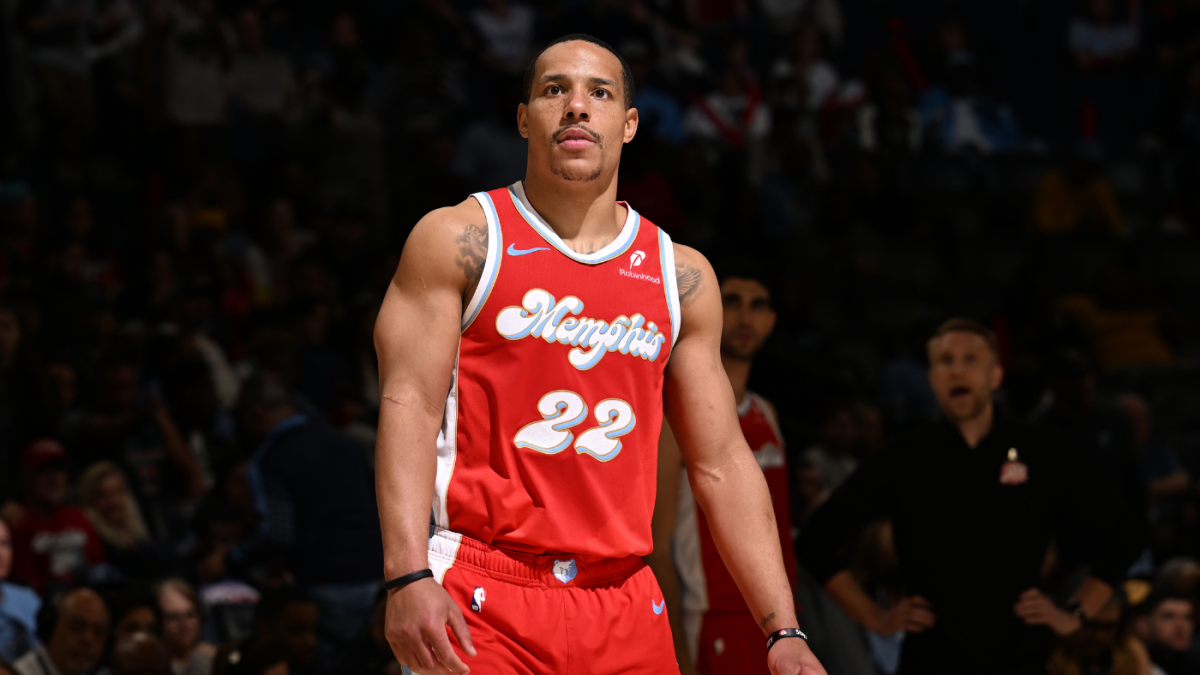The Desmond Bane Trade: Unpacking a Defining NBA Transaction
The NBA landscape has been profoundly altered by the blockbuster trade between the Memphis Grizzlies and the Orlando Magic involving Desmond Bane. This deal is more than just a player exchange; it represents a strategic crossroads for two franchises with distinct visions and a compelling window into the modern NBA’s tactical and financial complexities.
The Mechanics of the Trade
Memphis sent Desmond Bane, a coveted shooting guard who recently inked a $207 million extension, to Orlando in exchange for a multifaceted package: Kentavious Caldwell-Pope, Cole Anthony, four unprotected first-round draft picks, and a first-round pick swap. This haul is extraordinary both in scale and ambition, reflecting how highly Bane is valued for his scoring prowess, playmaking skills, and defensive acumen.
Bane’s statistical contributions underscore his elite status. Averaging over 20 points per game alongside solid rebounds and assists, he is a prototypical two-way wing player—a skill set increasingly vital in today’s NBA paradigm. His versatility and shooting range make him a key piece capable of influencing both ends of the floor.
Orlando’s Calculated Leap: Betting on Immediate Competitiveness
The Magic’s front office has clearly signaled an all-in approach by securing Bane, underscoring a “win-now” mindset. Positioned alongside promising young stars Paolo Banchero and Franz Wagner, Bane’s arrival infuses established scoring and defensive reliability that the Magic lacked. This move signals their intent to escalate their playoff competitiveness amid an East Conference landscape perceived as more accessible.
Surrendering four unprotected first-round picks and a pick swap is a steep price, emphasizing the Magic’s prioritization of present achievements over long-term asset accumulation. Their strategy closely follows recent Eastern Conference trends—similar to the Knicks’ pursuit of Mikal Bridges—highlighting a broader willingness among contenders to leverage future capital for immediate elevation.
Memphis’ Forward-Looking Blueprint: Asset Accumulation and Flexibility
Conversely, Memphis has taken a long view, viewing the trade as a prudent recalibration. While Bane is undeniably a valuable player, Memphis’ acquisition of multiple draft picks and role players like Caldwell-Pope and Cole Anthony equips them with versatile building blocks and financial maneuverability.
The infusion of four unprotected first-rounders plus a pick swap creates a robust pipeline for either talent development or trade leverage. This strategic asset hoarding safeguards Memphis’ ability to remain competitive amid evolving league dynamics and core player transitions. It’s a textbook example of balancing current performance with future sustainability, a model favored by franchises striving for enduring success.
Community and Expert Reaction: A Tale of Two Perspectives
Reaction has been sharply divided. Analysts often hail Memphis for maximizing return value, dubbed by some as a major “heist” reflecting astute front-office acumen. This perspective praises their adeptness in transforming a single star player into a foothold for future success.
On the flip side, some fans and commentators voice concern over Orlando’s expensive gamble, fearing the loss of draft capital might hamper the Magic if immediate success proves elusive. Yet, Orlando’s conviction in Bane’s transformative potential drives their “all-or-nothing” philosophy.
Overall, consensus ratings tend to grade the trade as balanced considering the teams’ contrasting goals—Orlando’s thrust for immediate contention against Memphis’ patient asset stockpile. This trade fits a broader league motif revolving around strategic risk-taking and the premium placed on star wings armed with shooting depth and defensive prowess.
The Greater NBA Context: Changing Values and Market Dynamics
This trade reflects incremental evolution in the NBA’s valuation of player archetypes and franchise-building instruments. Players with multi-dimensional skills like Bane—capable of influencing spacing, scoring, and defense—command premium status. Meanwhile, draft picks remain indispensable currency in constructing sustainable contenders amid salary cap intricacies and player movement volatility.
The domino effect from this deal could spur other Eastern Conference teams to reassess their competitive timetables and resource management. As teams wrestle with financial realities and competitive peaks, the balance between chasing timely victories and cultivating future talent acquisition channels becomes increasingly delicate.
Conclusion: Resonating Ripples Across the NBA Landscape
The Desmond Bane trade crystallizes the dueling philosophies of NBA roster management: Orlando’s readiness to wager the future for a chance at near-term glory, and Memphis’ preference for building a resilient core through shrewd asset accumulation. Such contrasting strategies illuminate the sophisticated chess game NBA front offices navigate, balancing star valuations, draft capital, and contract implications.
As the new season nears, Bane’s on-court impact in Orlando and the Grizzlies’ deployment of their newfound asset trove will serve as a captivating narrative thread. Beyond the immediate ramifications lies a powerful testament to how a single trade can redefine franchise trajectories, ignite competitive shifts, and fuel basketball discourse for years to come.











